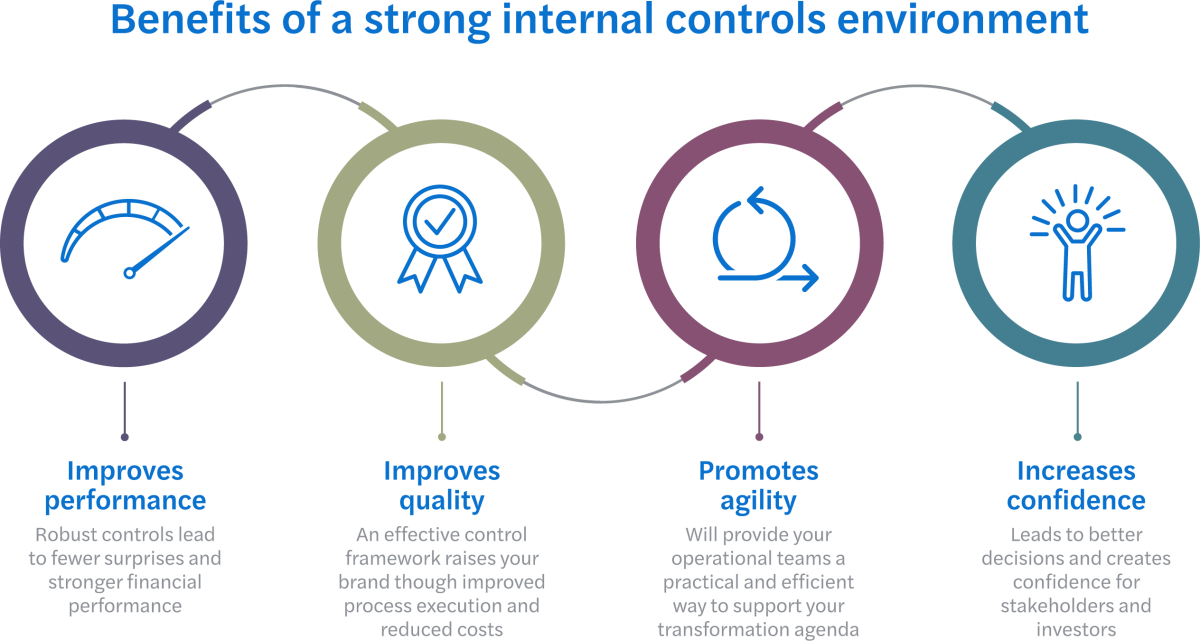Retailers rapidly responded to the pandemic by digitally transforming and need to make sure internal control environments have evolved at the same pace.
Retailers are facing steep energy prices, supply chain issues and rising inflation, alongside the three significant events that have turned the world on its head: Brexit, the pandemic and now the Russian war against Ukraine. These significant challenges and events require retailers to re-think their processes and strategies on how they do business.
Retailers could be forgiven for thinking that things were looking up again. After a rocky two years, January saw sales improve and retail seemed to be making a comeback as the pandemic pressures eased. But the cost-of-living crisis and war in Ukraine has rocked consumer confidence and cast a shadow over the sector.
With new uncertainties mounting, organisations need to continually review their strategies once again. This follows the massive transformation to business processes and practices made to cope with the impact of the pandemic.
Experience shows us that emerging risks need to be discussed and brought into the boardroom on an ongoing basis. This is no longer a formal annual exercise – it requires constant horizon scanning. The retail industry has responded quickly, and now is the right time for organisations to make sure they have designed and embedded effective internal controls in their new processes to ensure resilience and efficiency whilst mitigating future risks to their strategies.
Ultimately, having an effective internal control environment leads to fewer surprises (early warning systems), better decisions and enhanced trust and confidence for investors and stakeholders. The stronger reliable controls are designed and embedded, the easier it is to shift focus to new risk areas. A well-controlled business allows for focus on strategy, achieving goals and increasing profitability.
Why talk about controls now? Since the start of the pandemic, change in the retail sector has been nothing short of epic. Responding to public health measures, retailers accelerated their digitalisation programmes to move business online and continue serving consumers stuck at home in lockdowns.
The pandemic has shown us that a well-controlled business is more resilient and able to respond quicker to opportunities.
Online retail sales have grown substantially. Figures from the Office for National Statistics show 27%1 of sales are now online compared to 19% in February 2020 shortly before Covid-19 hit the UK. In fact, online sales peaked at almost 38% in January 2021 and show little sign of falling back to pre-pandemic levels.
Having an effective internal control environment will lead to fewer surprises, better decisions and enhanced trust and confidence for your investors and stakeholders
Everything from customer service, logistics and supply chains have been reorganised, online sales, inventory and warehousing systems have been overhauled, employees have moved to home-working, and cybersecurity has shifted back up the list of retailer’s priorities.
Disruption like that inevitably means a change in working practices and procedures. And to do that requires robust internal controls.
There is no doubt those ‘makeshift’ controls worked, in fact, they saw the sector through a major crisis. However, the accelerated pace of change inevitably means quick fixes were applied and their design may not meet future needs. Inflation, the cost-of-living crisis and geopolitical instability means storm clouds are gathering.
Simple, strong controls make good business sense. Irrespective of compliance requirements, with specific reference to the government white paper ‘Restoring Trust in Audit and Corporate Governance’ which proposes a new internal controls regime. In the last two years, we have seen many unanticipated changes which have made businesses more agile and creative but also more risk-conscious. Therefore, to continue growing sustainably it is important to get the foundational internal controls right. Controls that are designed specifically to support the delivery of a company’s strategic objectives are more achievable.
Practical advice
Let us not forget that this is a journey. The quickest way to start is with a gap analysis. This provides an understanding of where you are now and a view of where you want to go.
Control environment maturity may range from ‘limited’ with key controls identified and actions more reactive, all the way to ‘fully embedded’ with an optimised suite of controls that are continuously monitored, giving oversight and visibility as well as confidence that controls are working effectively. Once you know where you are and where you want to go, you can feed that into your internal controls programme.
For a control framework to work effectively it needs to be continually monitored and refreshed, as well as scalable to accommodate changes to business processes. A good example of this is that the full impact of Brexit, which is still to be seen, will drive more changes. Retailers still need to keep an ear to the ground.
If you want to be ready and better prepared to respond to future shocks, are looking for confidence in the health of your business, want to achieve your strategy and goals - not to mention increase profitability –a strong control framework is essential!
SOURCE
1Office for National Statistics: https://www.ons.gov.uk/businessindustryandtrade/retailindustry/timeseries/j4mc/drsi
To find out more about Mazars and the services they provide to the retail industry, click here.
This article was also published in The Retailer, our quarterly online magazine providing thought-leading insights from BRC experts and Associate Members.


